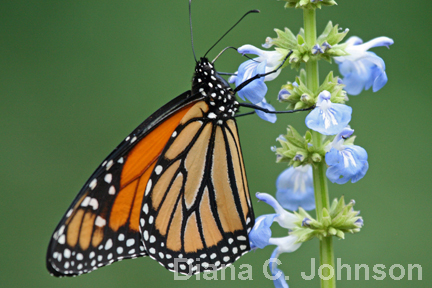
In a grand sense, we all know that birds, butterflies and other wildlife need food and shelter to flourish. But what may not be as well known is the extent to which our own, individual gardens can contribute to wildlife’s general well-being.
The National Wildlife Federation is seeking to change that, by encouraging both home gardeners and communities worldwide to create a network of mini-refuges for wildlife through its Certified Wildlife Habitat program.
While the name may sound intimidating, the process for creating a certified garden is not. And size doesn’t matter: your habitat garden may be as small as a patio, or cover several acres or more.
All that’s required is that you supply four components — food, water, cover and a place to raise young — for at least one type of wildlife. Then incorporate sustainable gardening techniques to maintain the space.
The Basic Four
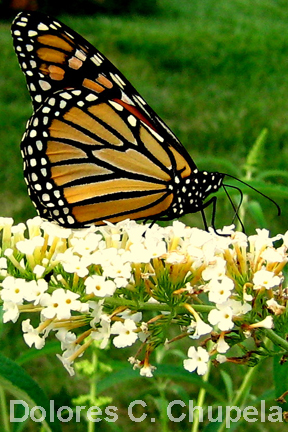
“Your plants are going to be the things you should really focus on, for food, shelter and places to raise young,” said David Mizejewski, a NWF naturalist.
Indeed, plants are a primary source of food for many wildlife, providing berries, seeds, nuts, pollen, sap and nectar. As a secondary food source, they sustain insects that are part of the food chain as well.
Native plants, in particular, are a good choice because they’re already part of the natural ecosystem. They’ve adapted to the climate and soils. They’re not usually fussy or require much care. And local wildlife already depends on them for survival.
In addition, brushy, grassy and thorny plants provide shelter from the elements and predators.
“Planting dense patches of shrubs, keeping mature trees on your property, and planting a prairie or meadow or some kind of grassland environment are great ways to create shelter,” Mizejewski said.
Often overlooked, Mizejewski added, is providing a place for animals to raise their young.
“We want people to realize that wildlife has different needs at different parts of their life cycle,” he said. “For example, butterflies need specific host plants where they can lay their eggs. If they don’t have them, they’re not being supported at that time in their life cycle.”
As for water, Mizejewski suggests, “Go with what’s most natural for your area. No way is better than another. It could be a shallow dish on the ground, a birdbath on a pedestal, or a puddling area for butterflies.”
What to Attract
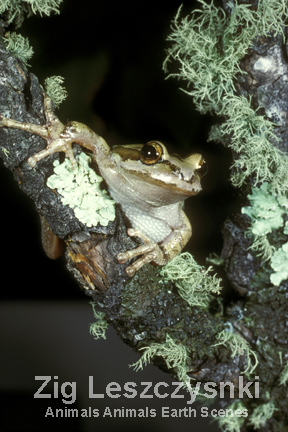
It’s not necessary to try to lure every last living, breathing creature into your garden.
Instead, Mizejewski said, “You can say, ‘I’m doing a butterfly garden.’ That’s one way to meet those four components. Or you could have a frog pond, for amphibians. You’re not putting in nesting boxes for birds, or a rock piles for animals to go into, to bear babies.”
At spartan times of year, Mizejewski said it’s fine to supplement food produced by native plants with bird, squirrel or butterfly feeders.
However, he cautions against setting out people food that might bring in larger animals, such as raccoons, coyotes or even bears.
“There’s a difference in creating a wildlife friendly garden, versus attracting mammals,” he said. “A lot of people think they’re helping wildlife by putting out giant bowls of cat food to attract raccoons. But that doesn’t end well.”
Ongoing Care
Going green is fundamental.
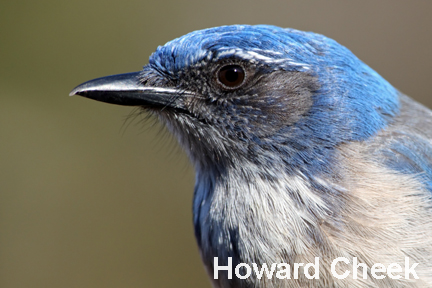
Pesticides and other chemicals are out, because of their potential to harm wildlife.
Mulching, shrinking lawns and installing drought-tolerant, native plants are in, because they help to conserve water and reduce the effort and resources needed to maintain them.
That’s not to say that your habitat garden will inevitably look like a tousled mess.
“It’s one thing to be a garden vigilante and create this wilderness habitat,” said Mizejewski. “It might be fabulous for wildlife, but if you’ve alienated all your neighbors and they associate wildlife gardening with breaking rules and bringing down values… We encourage people to work within the aesthetic of their neighborhood. Push the envelope, but do it in a positive way.”
Certifying Your Garden
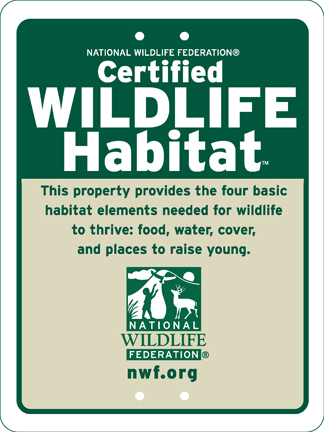
Steps to gaining recognition as an official certified wildlife habitat are easy to follow on the NWF’s website.
Log onto NWF.org. Click on the sage green box on the right, “Learn How to Certify Your Garden as a Wildlife Habitat.” Then either click the middle green button, “Certify Now,” if you’re ready to get started. Or click the blue “Create” button on the upper left to learn more.
Here’s what your garden should offer:
• Food sources (at least three): food provided naturally by plants, such as seeds, nuts, berries, fruits, nectar, sap, foliage/twigs or pollen; or supplemental seed, suet, hummingbird, squirrel or butterfly feeders.
• Cover (at least two): a wooded area, dense shrubs or thicket, meadow or prairie, evergreens, ground cover, roosting box, water garden or pond, bramble patch, burrow, cave, brush or log pile, or rock pile or wall.
• Water (at least one): a bird bath, butterfly puddling area, water garden or pond, rain garden, lake, river or stream, seasonal pool, ocean, spring or shallow dish.
• A place for wildlife to raise their young (at least two): mature trees, dense shrubs or thicket, meadow or prairie, host plants for caterpillars, dead trees or snags, or water garden or pond.
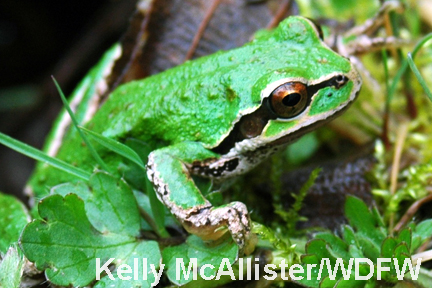
If your garden doesn’t yet offer the required elements, the website provides plenty of information about how to achieve them.
“A lot of people walk through the process and discover that they already have things,” Mizejewski said. “We hear from people who say, ‘I thought I had to rip up my yard. But I went through the checklist and have half of this stuff. Now I know what I’m missing.’ A lot of times, it may be something simple, like a bird bath, or host plants for butterflies.”
Pay a $20 fee and Voila! You’ll receive a certificate, an official spot on NWF’s registry, become a member of NWF and receive a year’s subscription to National Wildlife Magazine.
Your garden will also be part of a network of more than 10,000 certified wildlife habitat gardens in California, including 100 in Santa Barbara County and 145 in San Luis Obispo County.
While it may sound silly, there’s a certain personal satisfaction that comes with registering, and joining a broader community of like-minded gardeners. I signed up several weeks and have already received our certificate, which lists my husband Tom’s and my garden as number 151,190. While most certified habitats are in the US, there about 500 in other countries, including Canada and Guam.
≈
Connect with Nature
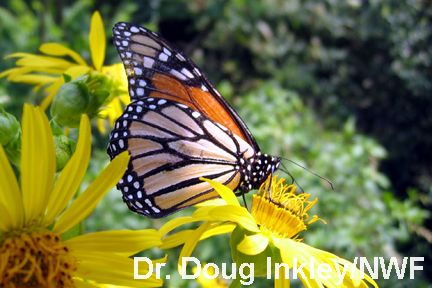
Who doesn’t enjoy watching a monarch butterfly flutter from one blossom to the next? Or admire the madcap determination of dueling hummingbirds jockeying for position on a feeder?
Setting up a habitat garden clearly helps wildlife.
It also provides an ongoing push to send us outdoors.
“This is about giving people that connection with nature. It’s so important, on physical, emotional and spiritual levels,” said David Mizejewski, a naturalist with the National Wildlife Federation.
“Creating a wildlife garden is a fun way to give yourself the opportunity to get outside, and experience and observe nature. You’re going to see it and enjoy it if you create a wildlife habitat, rather than a typical lawn.”
≈
Copyright, Joan S. Bolton. All rights reserved. Reproduction of text or photos in any form is prohibited without written permission.
≈
